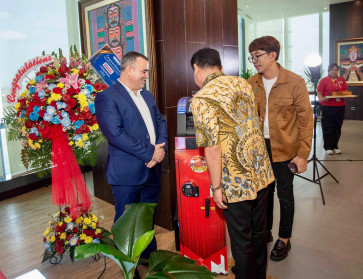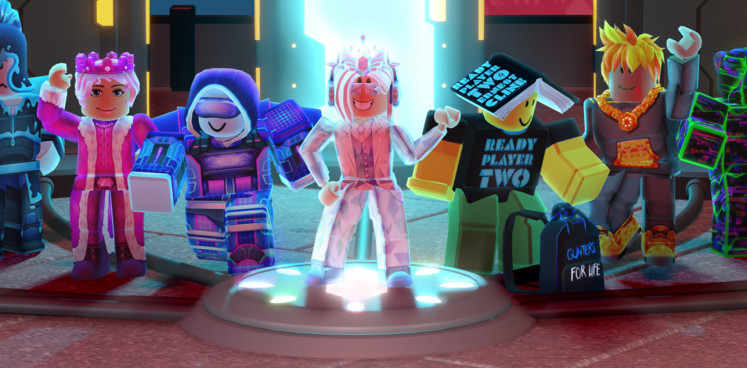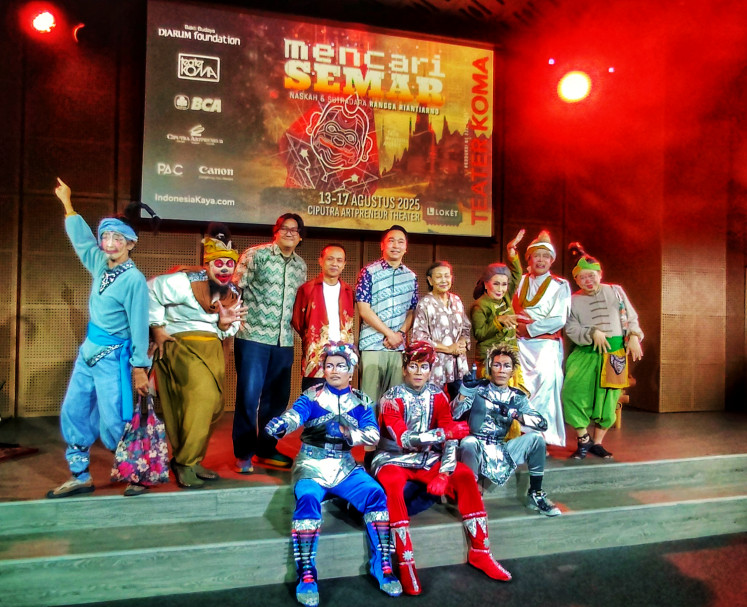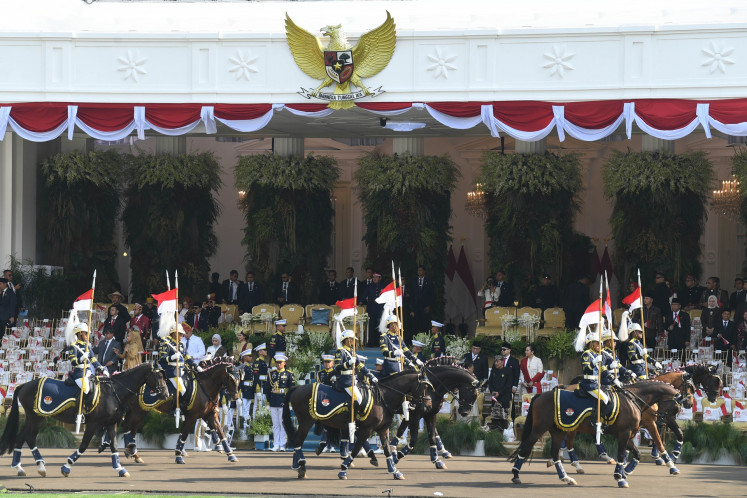Popular Reads
Top Results
Can't find what you're looking for?
View all search resultsPopular Reads
Top Results
Can't find what you're looking for?
View all search resultsPreserving Indonesian culture through traditional toys
Change text size
Gift Premium Articles
to Anyone
G
iven children’s intense use of technology, especially smartphones, traditional toys and games are perceived to be a positive activity for children to do in their spare time.
As part of its efforts to introduce traditional Indonesian toys to children, the Ministry of Women's Empowerment and Child Protection held the Festival Permainan Tradisional Anak Indonesia 2016 (Traditional Indonesian Children's Toys Festival 2016) at Taman Bhineka Tunggal Ika, Taman Mini Indonesia Indah, East Jakarta, on Sunday.
The festival was held for the first time this year, and involves various events such as opera, competitions, expo, playgrounds, parades and traditional dance performances from children representing the 34 provinces of Indonesia.
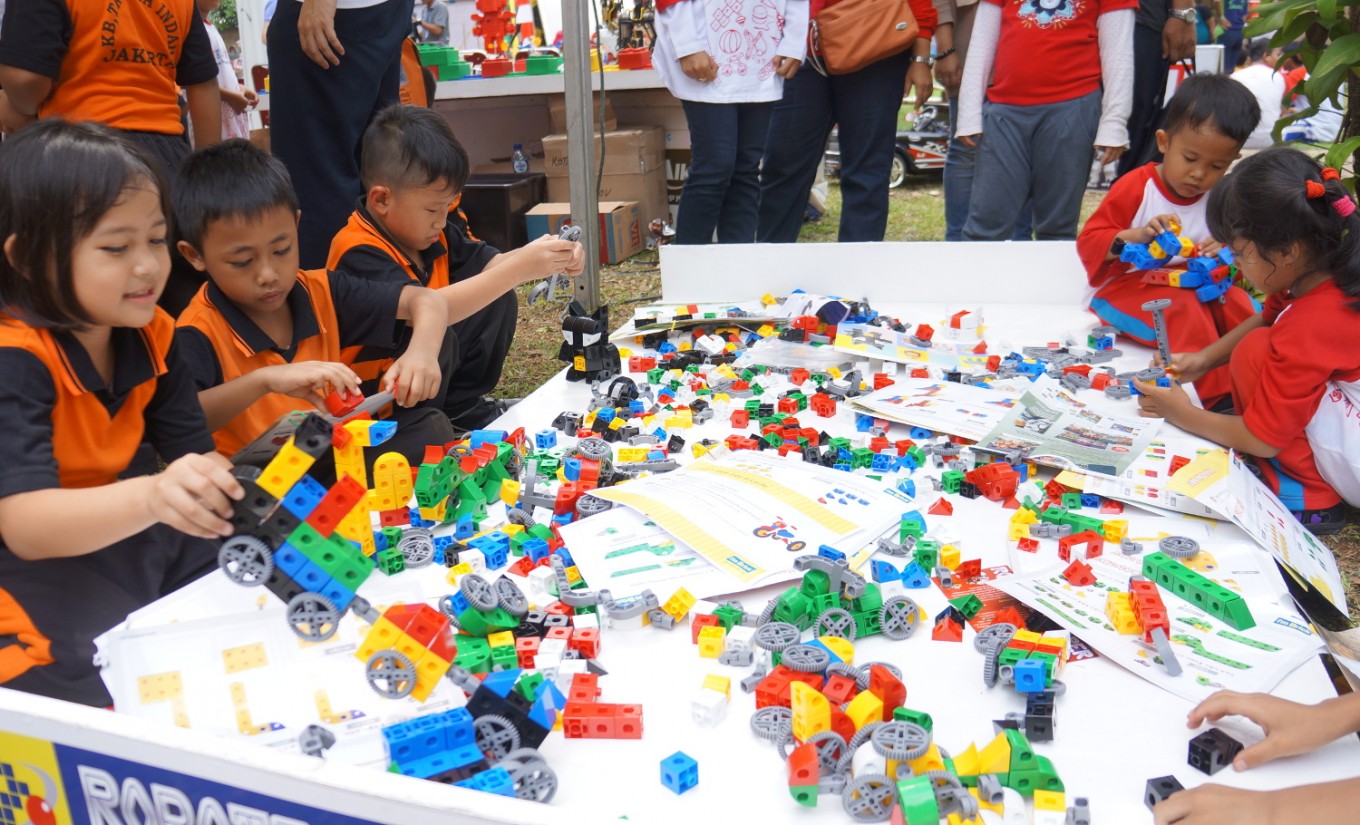 Children participate in a workshop by Robotic Explorer at the Traditional Indonesian Children's Toys Festival 2016 at Taman Bhineka Tunggal Ika, Taman Mini Indonesia Indah, East Jakarta, on Dec. 11.(JP/Ni Nyoman Wira)
Children participate in a workshop by Robotic Explorer at the Traditional Indonesian Children's Toys Festival 2016 at Taman Bhineka Tunggal Ika, Taman Mini Indonesia Indah, East Jakarta, on Dec. 11.(JP/Ni Nyoman Wira)
Upon entering the venue, visitors were welcomed by a traditional toys exhibition from the Hong Community, which displayed hundreds of the over 2,000 traditional toys from Aceh to Papua. Initiated by Mohammad Zaini Alif in 2005, the Hong Community has been identifying and gathering Indonesian traditional toys such as the dam-daman, panahan, taplak, wayang padi, congklak, kelereng that were on display, and many more.
“Traditional toys are a medium to learn about our identity,” said Zaini Alif to The Jakarta Post. “So children will learn about their national identity through their world, which involves playing [games].”
Located in Bandung, West Java, the Hong Community is visited by thousands of children each month, but Zaini still feels pessimism from their parents’ about traditional toys.
“Children’s awareness of the toys is there, but it is their parents who are probably still afraid of this and that, and in the end they choose something that is easy for them and less risky for their children,” he explained.
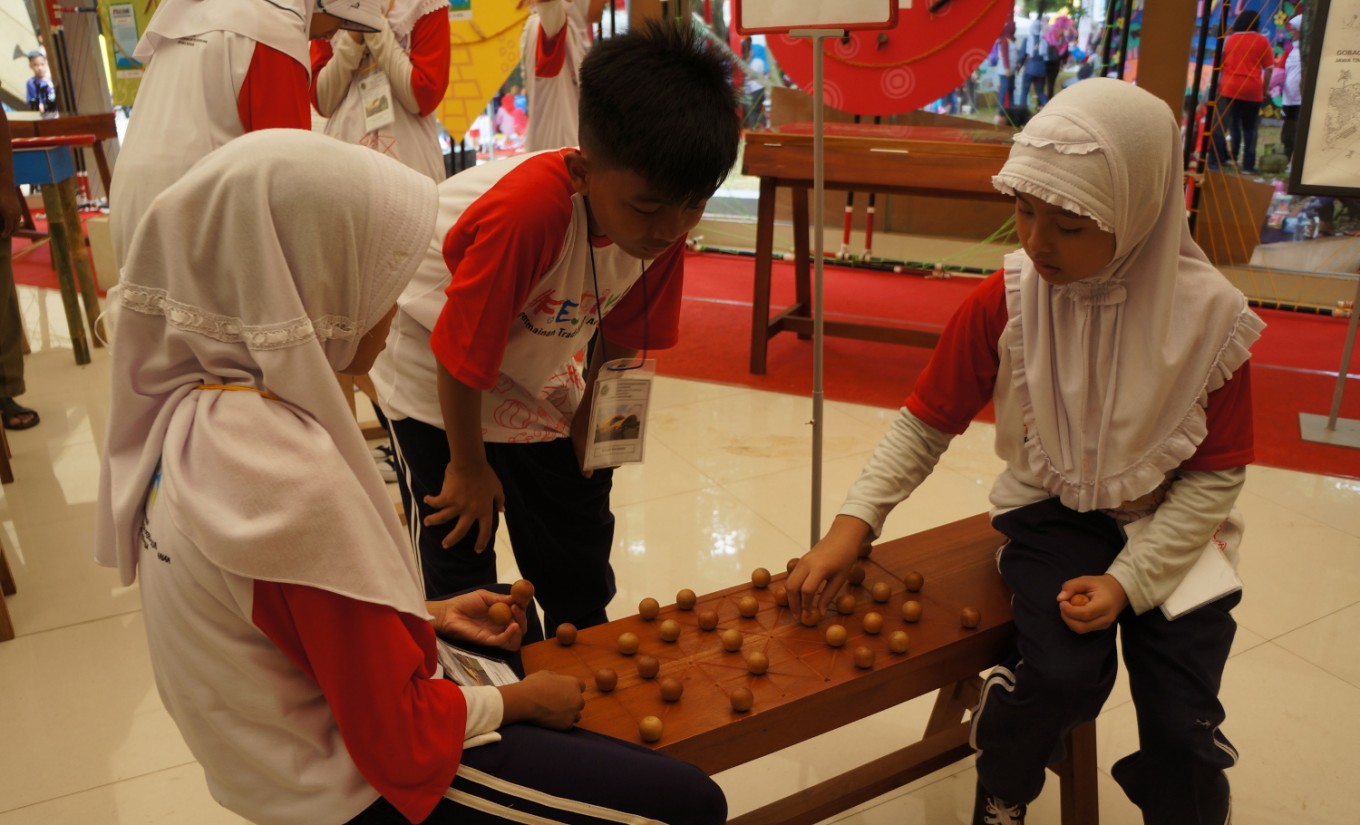 Children play "dam-daman" at the traditional toys exhibition at the Traditional Indonesian Children's Toys Festival 2016 at Taman Bhineka Tunggal Ika, Taman Mini Indonesia Indah, East Jakarta, on Dec. 11.(JP/Ni Nyoman Wira)
Children play "dam-daman" at the traditional toys exhibition at the Traditional Indonesian Children's Toys Festival 2016 at Taman Bhineka Tunggal Ika, Taman Mini Indonesia Indah, East Jakarta, on Dec. 11.(JP/Ni Nyoman Wira)
Furthermore, children could also participate in a workshop by Robotic Explorer in the venue. Established in 2005, Robotic Explorer focuses on robotic education starting from 3-year-old children to adults.
“We want to introduce the world of robotics to children, so they can assemble and play with robots that we’ve provided,” explained Robotic Explorer operational staff member Hendry, adding that different types of robots were on display, from simple ones controlled by cable, wireless robots, and more advanced robots controlled by Bluetooth.
(Read also: Weekend activity: Learn pottery at the National Gallery)
“When we talk about traditional toys, they must contain three elements; the toy itself, how to play it, and the song that is performed when children are playing with it,” said deputy head for child growth and development affairs at the Women’s Empowerment and Child Protection Ministry, Lenny N. Rosalin.
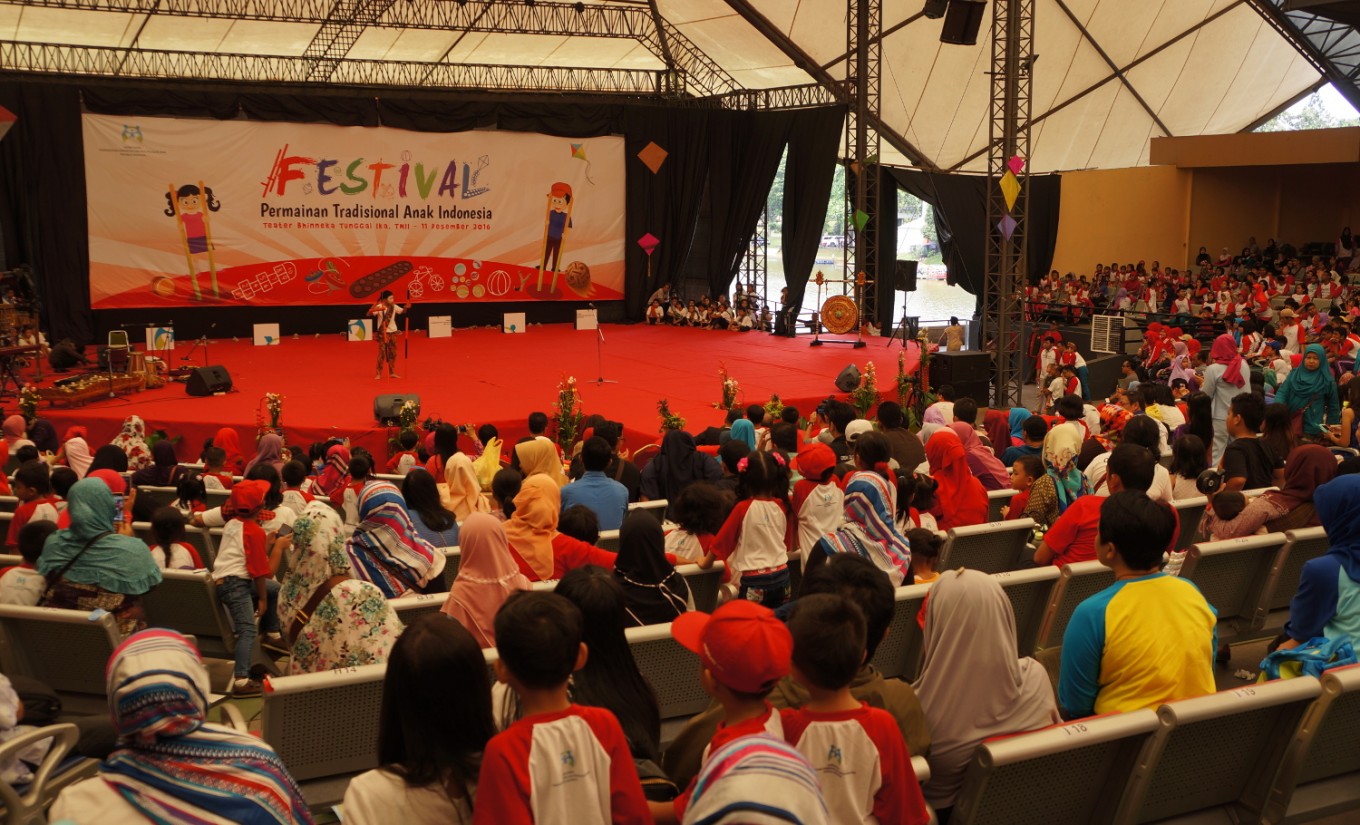 Children and their parents are watching the performance at the Traditional Indonesian Children's Toys Festival 2016at Taman Bhineka Tunggal Ika, Taman Mini Indonesia Indah, East Jakarta, on Sunday.(JP/Ni Nyoman Wira)
Children and their parents are watching the performance at the Traditional Indonesian Children's Toys Festival 2016at Taman Bhineka Tunggal Ika, Taman Mini Indonesia Indah, East Jakarta, on Sunday.(JP/Ni Nyoman Wira)
Zaini of the Hong Community said, “Many people want to combine (hi-tech) gadgets with traditional toys, but they’re actually different things." Traditional toys often need natural elements in order to be able to be played, for example taplak needs soil as its base, congklak needs a particular wooden case with holes as its “board”, and can-based ship toys need water to be able to move.
“Traditional toys should be included as children’s learning tools, instead of learning purposes,” Zaini stated. “They learn about honesty, focus, social values, their relationship with nature and relationship with God from the traditional toys.” (asw)


